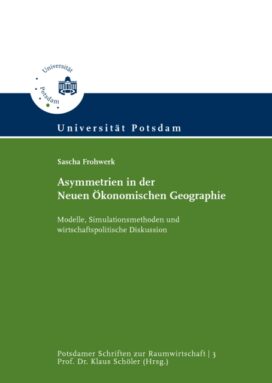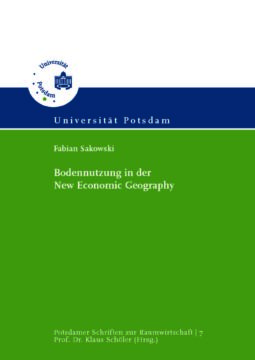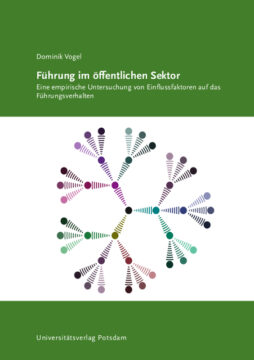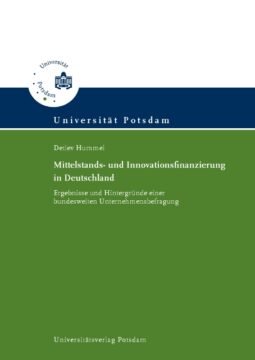The new economic geography explains agglomerations based on a
microeconomic general equilibrium model, witch is usually assumed to be
symmetric in the sense, that regions are of the same size and transport
costs and expenditure shares are the same. As a result, the models can
explain why an agglomeration occurs, but not in witch region. This book
modifies three of the most influential models of the new economic
geography and assumes various asymmetries. It compares the results to
the symmetric cases. Not only theoretical aspects but also methods of
simulation are discussed in detail. This methods can be applied to a
wide variety of models. To show the political implications of the
theoretical results, one of the asymmetric models is applied to the
economical development in germany after reunification. The model is able
to explain the persistent difference in wages between east and west and
the simultaneous incomplete agglomeration in the west.
Modelle, Simulationsmethoden und wirtschaftspolitische Diskussion
ISBN: 978-3-86956-089-2
225 pages
Release year 2011
Series: Potsdamer Schriften zur Raumwirtschaft , 3
15,00 €
Non-taxable transaction according to § 1 (1) UStG/VAT Act in combination with § 2 (3) UStG/VAT Act a. F. Providing this service, the University of Potsdam does not constitute a Betrieb gewerblicher Art/Commercial Institution according to § 1 (1) No. 6 or § 4 KStG/Corporate Tax Act. If the legal characterization of our business is changed to a commercial institution subsequently, we reserve the right to invoice VAT additionally. zzgl. Versandkosten
The new economic geography explains agglomerations based on a
microeconomic general equilibrium model, witch is usually assumed to be
symmetric in the sense, that regions are of the same size and transport
costs and expenditure shares are the same. As a result, the models can
explain why an agglomeration occurs, but not in witch region. This book
modifies three of the most influential models of the new economic
geography and assumes various asymmetries. It compares the results to
the symmetric cases. Not only theoretical aspects but also methods of
simulation are discussed in detail. This methods can be applied to a
wide variety of models. To show the political implications of the
theoretical results, one of the asymmetric models is applied to the
economical development in germany after reunification. The model is able
to explain the persistent difference in wages between east and west and
the simultaneous incomplete agglomeration in the west.
Recommended Books
-
 2011
2011Andreas Braun, Elisabeth Müller, Gergana Vladova, Silvia Adelhelm
Philo
16,00 €Non-taxable transaction according to § 1 (1) UStG/VAT Act in combination with § 2 (3) UStG/VAT Act a. F. Providing this service, the University of Potsdam does not constitute a Betrieb gewerblicher Art/Commercial Institution according to § 1 (1) No. 6 or § 4 KStG/Corporate Tax Act. If the legal characterization of our business is changed to a commercial institution subsequently, we reserve the right to invoice VAT additionally.
zzgl. Versandkosten
Add to cart -
 2018
2018Bodennutzung in der New Economic Geography
17,50 €Non-taxable transaction according to § 1 (1) UStG/VAT Act in combination with § 2 (3) UStG/VAT Act a. F. Providing this service, the University of Potsdam does not constitute a Betrieb gewerblicher Art/Commercial Institution according to § 1 (1) No. 6 or § 4 KStG/Corporate Tax Act. If the legal characterization of our business is changed to a commercial institution subsequently, we reserve the right to invoice VAT additionally.
zzgl. Versandkosten
Add to cart -
 2016
2016Führung im öffentlichen Sektor
13,50 €Non-taxable transaction according to § 1 (1) UStG/VAT Act in combination with § 2 (3) UStG/VAT Act a. F. Providing this service, the University of Potsdam does not constitute a Betrieb gewerblicher Art/Commercial Institution according to § 1 (1) No. 6 or § 4 KStG/Corporate Tax Act. If the legal characterization of our business is changed to a commercial institution subsequently, we reserve the right to invoice VAT additionally.
zzgl. Versandkosten
Add to cart -
 2012
2012Mittelstands- und Innovationsfinanzierung in Deutschland
14,00 €Non-taxable transaction according to § 1 (1) UStG/VAT Act in combination with § 2 (3) UStG/VAT Act a. F. Providing this service, the University of Potsdam does not constitute a Betrieb gewerblicher Art/Commercial Institution according to § 1 (1) No. 6 or § 4 KStG/Corporate Tax Act. If the legal characterization of our business is changed to a commercial institution subsequently, we reserve the right to invoice VAT additionally.
zzgl. Versandkosten
Add to cart
Publisher Info
Contact
Potsdam University Library
University Press
Am Neuen Palais 10
14476 Potsdam
Germany
verlag@uni-potsdam.de
0331 977-2094
0331 977-2292





